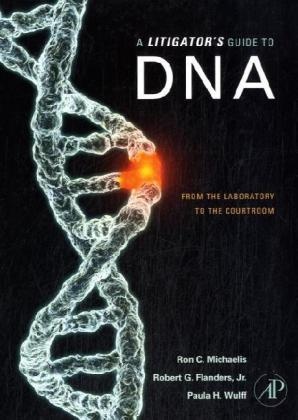Read more
Klappentext A Litigator's Guide to DNA educates both criminal law students and forensic science students about all aspects of the use of DNA evidence in criminal and civil trials. It includes discussions of the molecular biological basis for the tests, essential laboratory practices, probability theory and mathematical calculations, and issues relevant to the prosecution and the defense, and to the judge and jury hearing the case. The authors provide a full background on both the molecular biology and the mathematical theory behind forensic tests, describing the molecular biological process in simple mechanical terms that are familiar to everyone, and periodically emphasizing the practical, take-home messages the student truly needs to understand. Pedagogical elements such as Recapping the Main Point boxes and valuable ancillary material (Instructors' Manual, PowerPoint slides) make this an ideal text for professors. Zusammenfassung Educates litigators! judges! criminalists! and students about various aspects of the use of DNA evidence in criminal and civil trials. This book includes discussions of the molecular biological basis for the tests! essential laboratory practices! probability theory and mathematical calculations. Inhaltsverzeichnis The Structure of DNA and the Variability of the Human DNA Sequence; The Molecular Biological Basis of Forensic DNA Tests; Quality Control, Quality Assurance and Sources of Uncertainty in the Data; Population Genetics, Probability Calculations and the Proper Interpretation of the Evidence; Mitochondrial DNA (mtDNA) Analyses; Y Chromosome Analyses; DNA in Court; Arguing for the Prosecution; Arguing for the Defense; Post-Conviction DNA Testing; Using the Chi Square Test to Determine if a Population Conforms to HWE Expectations; How the RMP, Prior Odds of Guilt, and the PFP Influence the Posterior Odds of Guilty (POG); Peternity Index (PI) Calculations for Different Combinations of Maternal, Child and Alleged Father Genotypes; Sample Consent Form; Doing Your Own Research: Useful References, Websites and Strategies for Finding Current Information...
List of contents
The Structure of DNA and the Variability of the Human DNA Sequence; The Molecular Biological Basis of Forensic DNA Tests; Quality Control, Quality Assurance and Sources of Uncertainty in the Data; Population Genetics, Probability Calculations and the Proper Interpretation of the Evidence; Mitochondrial DNA (mtDNA) Analyses; Y Chromosome Analyses; DNA in Court; Arguing for the Prosecution; Arguing for the Defense; Post-Conviction DNA Testing; Using the Chi Square Test to Determine if a Population Conforms to HWE Expectations; How the RMP, Prior Odds of Guilt, and the PFP Influence the Posterior Odds of Guilty (POG); Peternity Index (PI) Calculations for Different Combinations of Maternal, Child and Alleged Father Genotypes; Sample Consent Form; Doing Your Own Research: Useful References, Websites and Strategies for Finding Current Information

